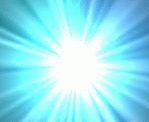 Superoutburst of AK Cnc in 2003 March-April
Superoutburst of AK Cnc in 2003 March-April  Superoutburst of AK Cnc in 2003 March-April
Superoutburst of AK Cnc in 2003 March-April

(AK Cnc in superoutburst, CCD image taken by Okayama U. Sci. team)
CNCAK 20030322.835 135 Scp Henden/Sumner sequence
Regards, Patrick(vsnet-outburst 5355)
AK Cnc possible outburst. Observation made through clouds, could someone confirm.
CNCAK 030322.411 135 Stu.RASNZ OUTBURST?
Regards, Rod Stubbings(vsnet-outburst 5356)
AK Cnc is in outburst...
Mar 22.892 12.9 Seq. TA
regards, Gary ------------------------------------------------------------- Gary Poyner garypoyner@blueyonder.co.uk gp@star.sr.bham.ac.uk http://www.garypoyner.pwp.blueyonder.co.uk/varstars.html --------------------------------------------------------------(vsnet-outburst 5357)
Star UT Mag ------------------------------------- CNCAK Mar 23.844 13.2 Seq. Henden Regards, Eddy Muyllaert Oostende, Belgium eddy.muyllaert1@pandora.be(vsnet-campaign-dn 3553)
CNCAK 20030321.85 <140 Scp CNCAK 20030322.835 135 Scp CNCAK 20030323.835 134 Scp CNCAK 20030324.868 135 ScpThe most recently observed outbursts of this SU UMa-type dwarf nova occurred in 2001 April and 2001 November (both superoutbursts).
Regards, Patrick
Dear Colleagues,
We have received time-series photometry of AK Cnc during the recent superoutburst from Jochen Pietz (four nights), Nyrola Observatory team (Arto Oksanen and Pertti Paakkonen), Tanabe-san and Okayama U. Sci. team, Torii-san (RIKEN), and Kyoto data. Due to the unexpected "interruption" by GRB 030329, some of the entire large amount data (the data almost covered the superoutburst in spite of the contemoranous occurrence of the GRB!) still need to be analyzed. A preliminary analysis of a partial set of data has yielded a mean superhump period of 0.06736 d, which is slightly shorter than the literature value. The period change is almost zero, but has a slight indication of a positive period derivative. Is it likely the superhump period of AK Cnc is located close to the borderline between positive and negative Pdot systems. There have been intriguing change in the superhump profile (e.g. double-wave modulations during the early and late stages), which needs to be analyzed in detail using the complete data set.
Regards, Taichi Kato VSNET Collaboration team
 Previous observation of superhumps in 1995 (paper)
Previous observation of superhumps in 1995 (paper)
 Possible Outburst in 1996 January
Possible Outburst in 1996 January
 Identification as an SU UMa-type dwarf nova (1992)
Identification as an SU UMa-type dwarf nova (1992)
 Related Short-Period Systems
Related Short-Period Systems
 Return to Daisaku Nogami's page
Return to Daisaku Nogami's page
